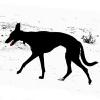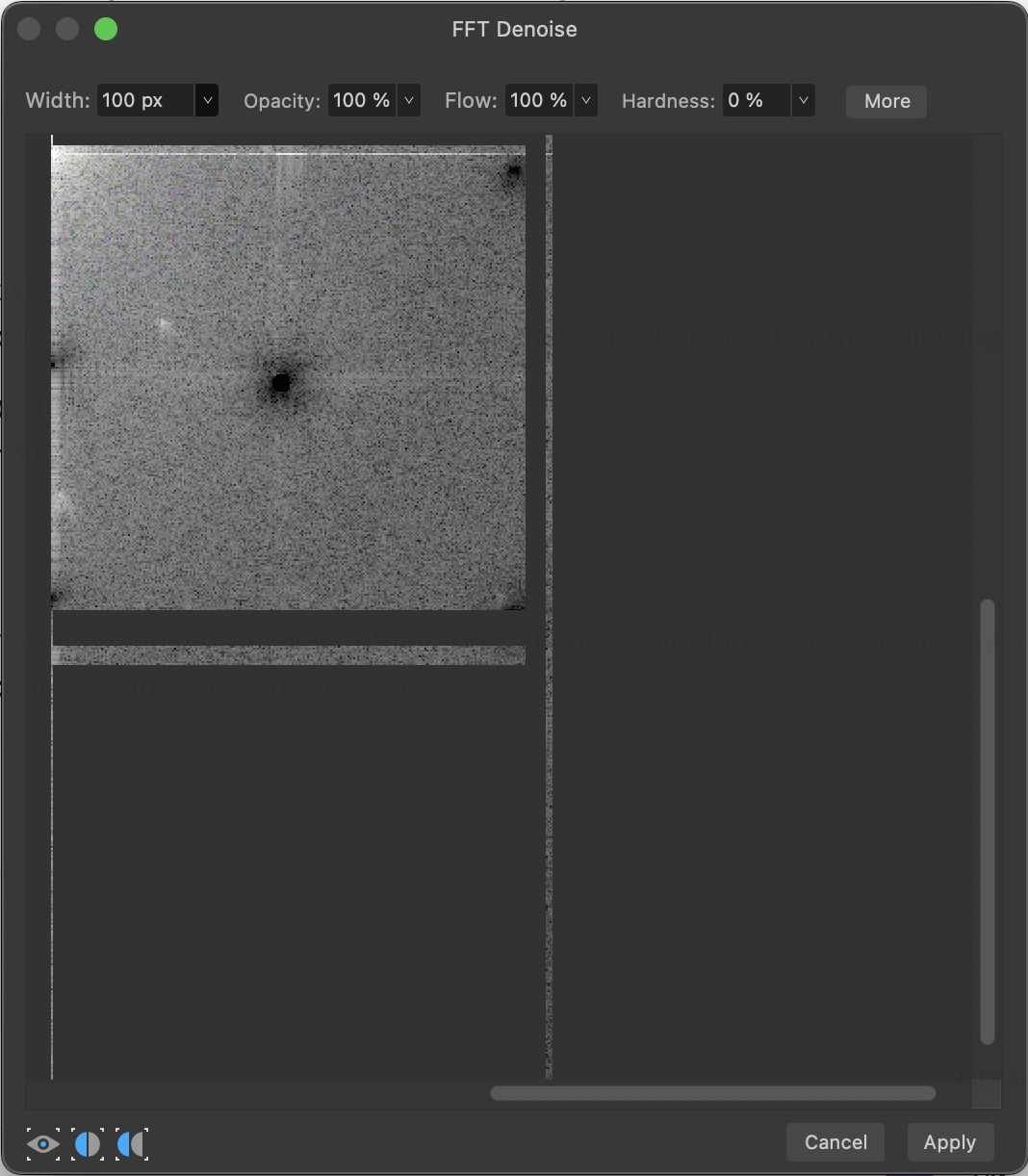-
Posts
58 -
Joined
-
Last visited
Everything posted by Mark_A
-

fft filter window when scrolled struggles to redraw
Mark_A replied to Mark_A's topic in V2 Bugs found on macOS
Crumbs, , off topic but is that a screenshot of the FFT filter window, Hubble deep field edition? Mark -

fft filter window when scrolled struggles to redraw
Mark_A replied to Mark_A's topic in V2 Bugs found on macOS
Fixed by 2.2. Thanks. Mark -
Affinity Photo 2.1 on MacOS Ventura, hardware acceleration on. I think I recall that this has been a bug for Affinity 2 since it was launched. With an image open, use the Affinity menu 'Filter/noise/fft denoise'. Then, go to the fft denoise window that's opened, and use the scroll bars to scroll the pattern. Affinity struggles to draw the parts of the pattern beyond the margin - see the screenshot - and if you scroll back to the centre of the pattern, Affinity struggles to display the part of the image it displayed previously. Mark
-
Affinity Photo 2.1.0 on Mac OS. To reproduce this: Open Affinity and then an image. Make a change - e.g. add a layer. Use the Affinity menu "About'. Do not dismiss the 'About' panel but immediately use the Affinity menu 'Quit'. Affinity Photo is now unresponsive as it awaits your decision on whether to discard the current image or save it. That control is inaccessible to you as it is beneath the 'About' panel - which itself, you can no longer dismiss. (The application can now be killed via Apple's 'Force Quit' menu). Mark
-
Bring an image into Affinity by copying it from somewhere and then use 'File/New from clipboard'... and before various things will work, it's necessary to also use 'Layers/Rasterise'. This is by design, but it trips up people new to Affinity as they attempt to find out why e.g. moving the pixels in a marquee selection doesn't function. When rasterised, in the layers panel, the label on the layer changes from 'Image' to 'Pixels' but as an alert as to why something might not be working this is a bit subtle. Perhaps Affinity could provide something more here to provide a hint for users new to the software as to how to proceed. Mark
-
Once a grid preset is created (using the menu 'View/Grid and Axis'), Affinity 2 needs to give people the ability to set that preset as a default - so that when the software is reopened and a new image opened, that preset grid can instantly be made visible using the shortcut Cmd and ' . This would restore a time-saving function lost between versions 1 and 2. Mark
-
Bring an image into Affinity by copying it from somewhere and then use 'File/New from clipboard'... and before various things will work, it's necessary to also use 'Layers/Rasterise', This bites people from time to time as they attempt to find out why e.g. moving the pixels in a marquee selection doesn't function. When rasterised, in the layers panel, the label on the layer changes from 'Image' to 'Pixels' but as an alert as to why something might not be working this is a bit subtle. Would it be good if the new layer included an alert from the assistant as to whether the user would like to rasterise the layer on the spot - or indeed whether not being a rasterised layer isn't a feature at all but a bug? Mark
-

No Grid Does Appear
Mark_A replied to facebita's topic in Affinity on Desktop Questions (macOS and Windows)
Hi - yes, using the menus, displaying a grid works, especially with a preset set to display a grid in a chosen configuration. However, version 1 allowed the user to set up a grid and the grid was then persistent - close the application and reopen it, summon up the grid once more and the grid would reappear in its previous configuration (the configuration being saved in the application settings rather than in an individual .aphoto file) - and of course on Mac the short cut Cmd + ' would toggle the grid on and off. Mark -

No Grid Does Appear
Mark_A replied to facebita's topic in Affinity on Desktop Questions (macOS and Windows)
Thanks for this, both. In version 1, having set a default grid, subsequently, "Cmd" and "'" would toggle its appearance - this doesn't work in version 2 and is there a way to set things up so that it does? Mark -
Thinking of photos through glass here, where reflections may be captured along with whatever's behind the glass. Could something similar to the inpainting tool tackle the issue by analysing the image information surrounding the reflection, and, moving to a part of the image with a reflection, using the analysis to remove/mitigate the reflection component from the underlying image information? Mark
-

Sample Publisher file?
Mark_A replied to Mark_A's topic in Feedback for Affinity Publisher V1 on Desktop
*Eats worms*... much thanks for that! Mark -
It would be really useful if Affinity could provide a rich and high quality sample Publisher file for download with which to practice, please and thankyou.
-
Please could you have Affinity photo 1.7's help return results on the words "Banding" and "Spatter" - to help people identify tools to address unwanted colour banding? Not sure if Affinity Photo has the equivalent of a spatter tool, mind so apologies if this is a feature request as well as a request for a tweak to the help. Thanks.
-
This bites Affinity Designer 1.6.1 too but you'd probably extrapolated that. Hope this helps. Mark
-
When the attached SVG file - it's a union flag, source here: http://hjnilsson.github.io/country-flags/ - is opened or placed in Affinity 1.6.7 or the beta 1.7.0.112 , three of the red diagonal elements are invisible. The W3C validator https://validator.w3.org/check is happy with the SVG and it displays elsewhere correctly so this may be Affinity Photo (or it may be me). Mark gb.svg
-
Create an adjustment or live filter layer, and it has an alpha channel - used to selectively modify the adjustment. Looking in the channels panel, the alpha channel is listed and has a thumbnail rendering of itself. Is there a way to promote that alpha channel to a mask that can then be duplicated and applied to other layers? Thanks Mark



